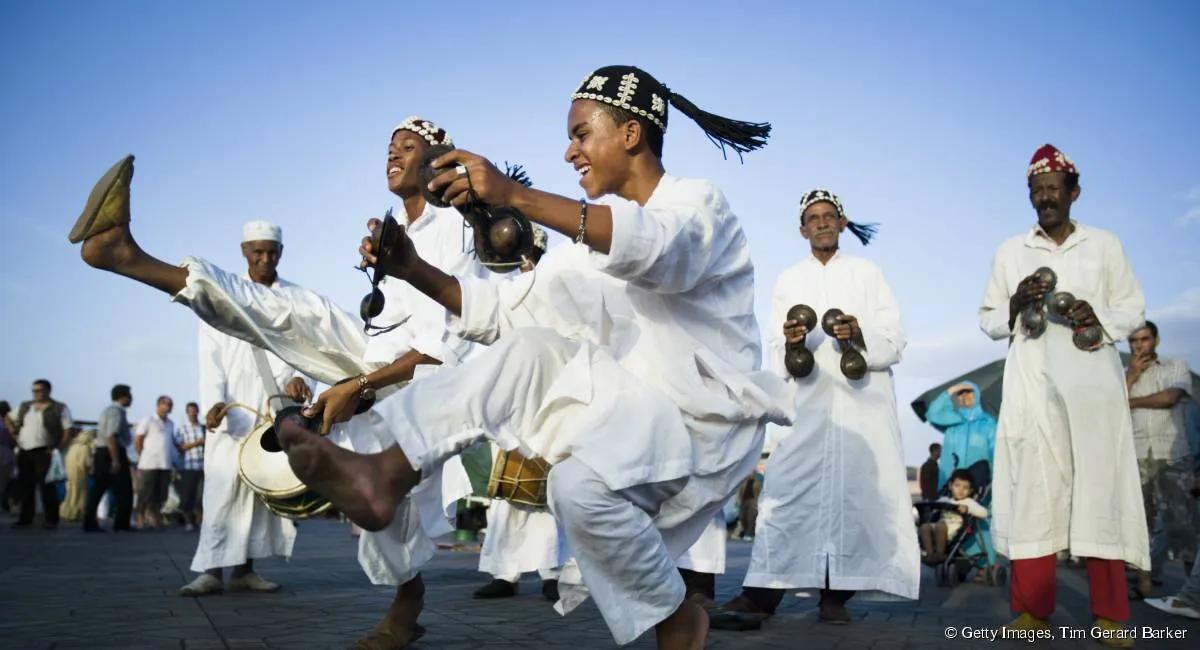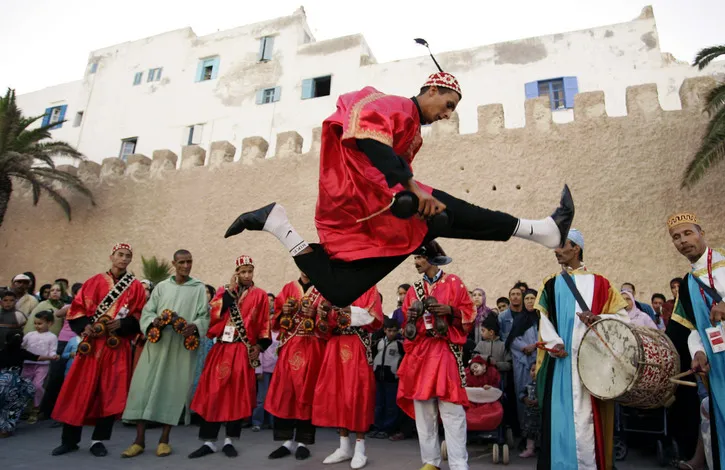
The Gnaouas or Gnawas or قناوة (a word derived from the African N'Goni) are descendants of former slaves from tribes (sometimes entire) from Black African origins (Senegal, Sudan, Ghana ...). The present brotherhoods of the Gnawas still practice important rituals today in which music and singing play an essential role. The Gnawies ceremonies always seem to be a ritual of possession for a therapeutic purpose: to heal, to act against negative influences or in favor of favorable spirits. The rites in which both African and Arab-Berber contributions are mixed can often be very long, and lead to trances of possessions. The Gnaoua Festival in Essaouira is an annual gathering place of this brotherhood.

History and evolution
These tribes were deported by the ancient dynasties which have crossed the history of Morocco and more rarely those of the other countries of the Maghreb, beginning with the Almohad empire for the works and buildings of the palaces and the strengthening of the armies. The formation of brotherhoods of gnaouas throughout Morocco is centered around master musicians (called maallems who are part of a caste in Moroccan villages and are exempt from agricultural work), instrument players (almost exclusively the qraqech - a kind of rattlesnake - and the gambri), clairvoyants (chouaafa), mediums and simple followers. They jointly practice a syncretic rite of possession (called Lila in Morocco, or derdeba and diwan in Algeria but still stambali in Tunisia).

Sacred Origins
According to old and rare Gnaouis scholars, music and Gnawas rituals, have their origins in Voodoo. These practices had to be metamorphosed in order to survive and adopt Islam as a religion in order to ensure their continuity (likewise for their cousins who had to adopt Christianity in America).
Instrumentation and description of music
The instruments used are the Guembri (three-string drum) played by the master musician (maâlem), the Qaraqab (or Qraqeb) (قراقب) and the T'bel (drum).
It is always the maâlem who plays the Guembri, on which he interprets particular melodies specific to each melk (supernatural entity that comes to ride the possessed). Each adept can be possessed only by the same melk and can only be possessed if the melody is played by the guembri. Seven colors are associated with the various mlouk and made visible by scarves which serve in particular to retain the dancers when the possession is too intense.
to be continued ...